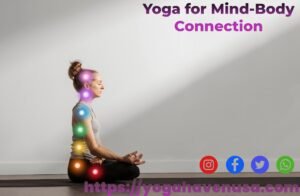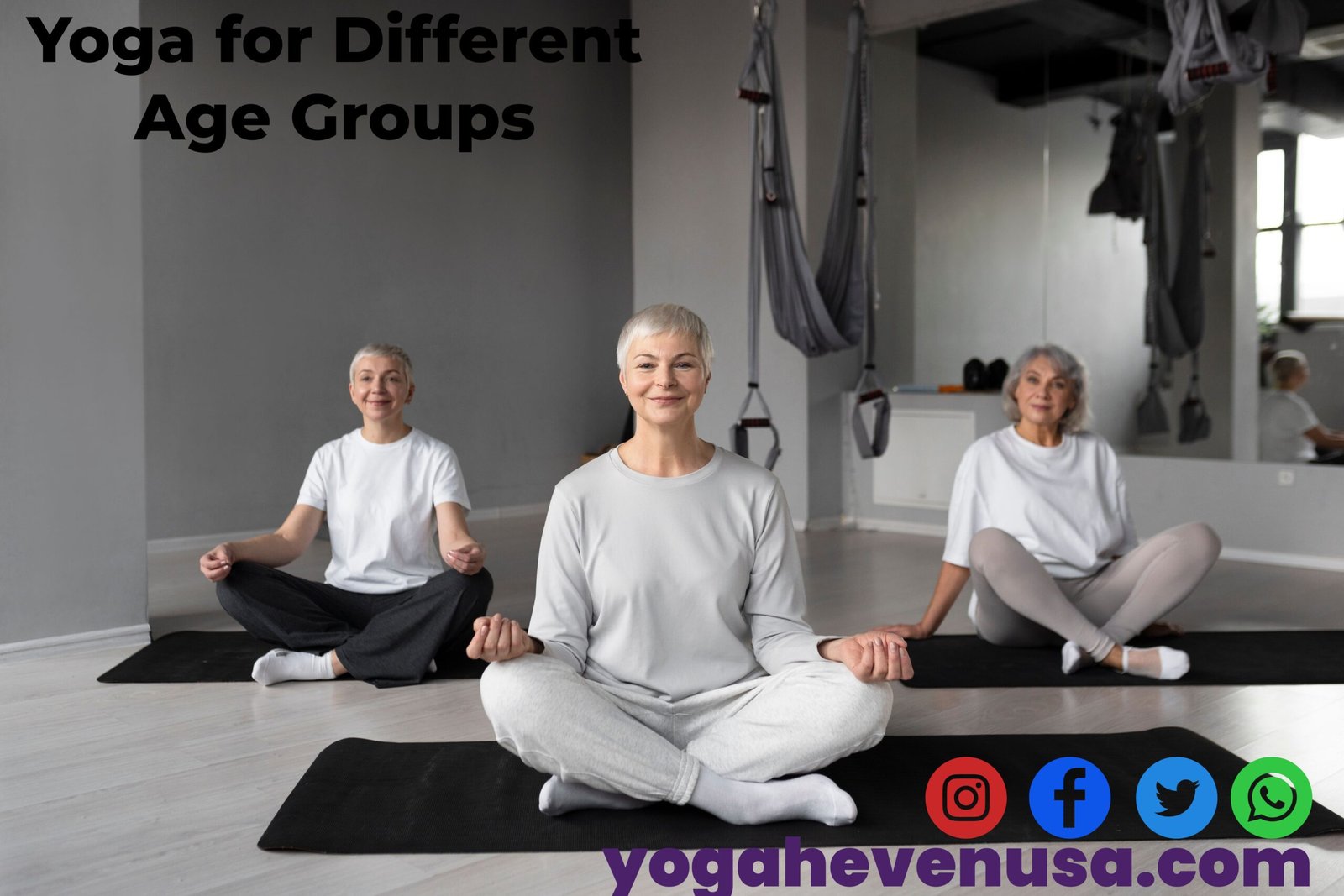Introduction
Everyone of all ages can benefit from yoga’s versatility. It is flexible enough to accommodate the needs of different age groups because of its emphasis on breath control, strength, mobility, and mindfulness. Yoga may be customized to meet the specific possibilities and obstacles encountered with each period of life. This article examines the potential health benefits of yoga for a range of age groups, from young children to senior citizens, emphasizing particular poses and adaptations that cater to distinct populations.
Yoga for Children
Yoga allows kids an enjoyable and stimulating approach to improve their mental and physical growth. Children are already adaptable and full of energy even at an early age. By directing this energy constructively, yoga enhances their balance, coordination, and focus. Playfully introduce youngsters to basic yoga postures such as the Tree Pose as the Cat-Cow Pose. Moreover, yoga fosters creative thinking and imagination, which can be utilized via storytelling and positions with animal themes, such as Cobra Pose and Downward-Facing Dog.

Among its health benefits, yoga instills in kids the value of relaxation and breath awareness. Children of any age can suffer anxieties and stress, which can be managed with techniques like deep breathing (Pranayama). Early instruction in these methods can provide kids lasting skills for stress reduction and emotional control. Additionally, the cultivation of inner peace and attention via mindfulness in yoga can improve social interactions and academic performance.
Yoga for Teenagers
Rapid changes in one’s emotional, physical, and psychological makeup occur during adolescence. Teens frequently experience stress from social dynamics, expectations in education, and the formation of their personal identities. Yoga can be a calming technique to help you through these turbulent times. Teenagers who practice yoga can increase their strength and flexibility, which is very advantageous for athletes. Asanas like Plank Pose (Phalakasana) and Warrior I and II (Virabhadrasana I and II) improve core stability and strength, which increases athletic performance and lowers the chance of injury.
Teenagers who practice yoga may additionally gain being aware of oneself and self-acceptance in a non-competitive setting. Yoga gives them a space to connect with their actual selves while they negotiate social pressure and cultural expectations. For the purpose of controlling tension, anxiety, and the emotional ups and downs that frequently accompany puberty, breathing techniques and meditation can be especially beneficial. Yoga can assist teenagers in developing resilience and self-confidence by developing an inner feeling of serenity and self-compassion.
Yoga for Adults
Yoga provides an array of benefits for people in terms of preserving their physical and mental health. People have a variety of pressures as they progress through various phases of adulthood, such as expectations from their careers, obligations to their families, and personal goals. Yoga offers a comprehensive approach that can tackle the mental and physical obstacles that come with growing up. Maintaining an active lifestyle and avoiding injuries require improved flexibility, strength, and balance, all of which can be achieved with regularly practicing yoga.
Because of the demands of contemporary life, adults frequently feel tense and stressed. Yoga promotes attention and relaxation, which lowers stress and enhances mental clarity. For individuals seeking to decompress and release pent-up tension, deep stretching and peaceful practices such as Yin Yoga or Restorative Yoga can be especially helpful. Additionally,the meditative aspects of yoga can enhance focus and productivity, making it easier to handle the demands of a busy life.
Yoga can help women with specific health issues like menopause symptoms and discomfort during the period. Hormonal balance can be enhanced and cramps lessened with gentle poses and breathwork. Another specific type of yoga is called prenatal yoga, which uses breathing exercises and gentle stretches to support pregnant women and help them keep active, manage stress, and be ready for childbirth.
Yoga for Older Adults
Keeping one’s strength, balance, and mobility as one ages becomes more crucial. Yoga is a great exercise for senior citizens since it can be adapted to meet different skill and fitness levels. Elders can enhance their ability to move and joint health in a safe atmosphere by participating in gentle yoga courses or chair yoga. These two things are necessary in avoiding falls and preserving independence. While simple stretches can assist reduce stiffness and promote circulation, postures like and Chair Pose can help improve stability and posture.

For elderly folks, yoga has mental and emotional benefits in addition to physical ones. Elders frequently suffer from feelings of loneliness and depression, however can be lessened with the practice of mindfulness and meditation. Exercises for breathing and mild movement can also help respiratory function and overall vitality. For those dealing with chronic conditions, yoga can be adapted to accommodate specific health concerns, providing a supportive and nurturing practice that promotes overall well-being.
Yoga for Special Populations
Particular population demographics, such as those with problems, long-term illnesses, or other medical issues, may also benefit from yoga. Anybody can practice yoga using adaptive approaches, regardless of their physical limitations. For instance, those with restricted mobility can safely practice yoga in a chair or on a bed. Yoga therapy is a specialist area that helps manage illnesses including arthritis, back pain, and cardiovascular disease by tailoring yoga practices for individuals who have specific health challenges.
Yoga is also helpful for kids with developmental issues like autism or ADHD. Enhancing motor abilities, lessening anxiety, and improving focus are all benefits of the exercise. Yoga provides a disciplined yet adaptable atmosphere where kids can learn self-control and understand their bodies.
Conclusion
Yoga is a universal practice that offers benefits for people of all ages and abilities. Whether it’s helping children develop focus and creativity, supporting teenagers through the challenges of adolescence, providing adults with a tool for stress management and physical fitness, or helping older adults maintain mobility and independence, yoga has something to offer everyone. By understanding the unique needs of each age group, yoga can be adapted to provide a safe and effective practice that enhances overall well-being.
